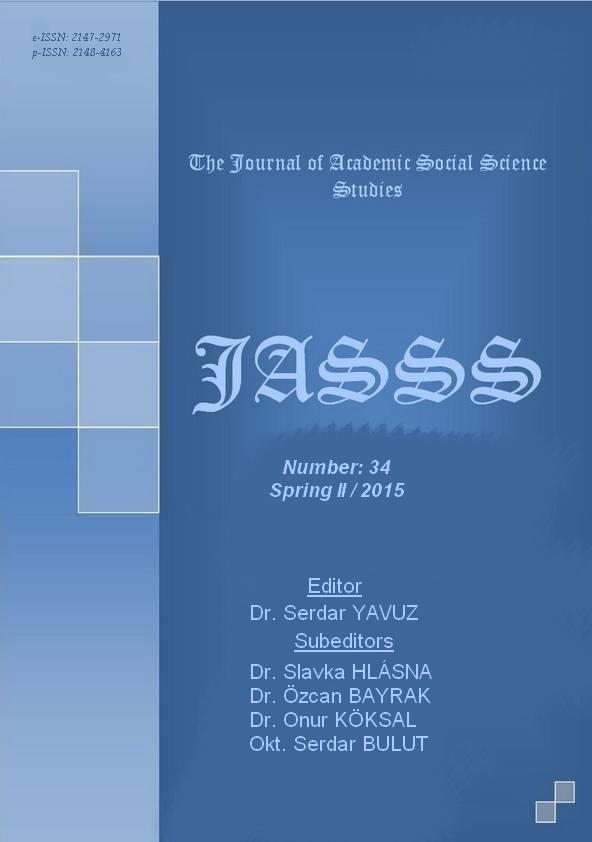Author :
Abstract
İnsanoğlunun var olduğu günden buyana başlayan tüketim tarihi, süreç içerisinde birçok dönüşüm geçirmiştir. Eski dönemin bakış açısı, ihtiyacı kadar almak ve çalışmak iken yeni anlayış daha çok satın almak için çalışmak ve tükettiğin kadarıyla varlığını sürdürebilmek üzerine kurgulanmıştır. Bugünkü gelinen noktada Baudrillard’ın dediği gibi, tüketim kavramı artık nesnelerin ötesinde fikir ve imajların tüketilmesini içermektedir. Tüketim ürünleri, taşıdıkları simgesel anlamlar üzerinden bireylere özel aidiyetler taşımaktadır. Kültürel dokular içerisinde, imaj, işaret ve göstergelerde tüketim baskın bir öğe halini almaktadır. Bu nedenle tüketim; reel bir ilişkiler spektrumu değil, tamamıyla gösterge, sembolik temsil ve işaretlerin yönlendirdiği bir davranış biçimidir. Günümüzde tüketim sadece kavramsal açıdan değil aynı zamanda tüketimi sağlayan araçlar açısından da dönüşmüştür. 1960’lı yılların sonunda askeri bir projenin ürünü olarak icad edilen internetin, 1980’li yıllara gelindiğinde kişisel bilgisayarların popüler olmasıyla birlikte bir tüketim aracı haline gelmiştir. İnternet yeni konumuyla aynı zamanda yeni ekonomi fikrinin de öncüsü olmuştur. 1990’lı yıllara gelindiğinde ise, iletişim ve bilişim teknolojileri ve internet birbiriyle paralel olarak gelişmiş; iletişimin sınırlı yapısını kırarak iş hayatında sınırlı gruplara hitap etmenin ötesine geçmiş, büyük kitlelere yayılımın merkezi haline gelmiştir. Bugünün ekonomi ve iletişim alanında web teknolojilerinin oluşturduğu sanal ortam ve sosyal alanlar, tüketimin yeni mecraları olmuştur. Bu alanların kullanıcısı tüketiciler ise, göstergeler ve imgeler üzerinden hareket eden ve karar veren profil çizmektedir. Tüketim göstergelerinin birer kimlik olarak öne çıktığı ve kültürel farklılıkların söz konusu kimlikler yoluyla betimlendiği postmodern dünyada görsel kültürün tüketicilerinin gerçekte kimler olduğu yeni ekonomide tüm aktörler için merak konusudur. Dolayısıyla bu çalışmada yaşanan bu kültürel ve sosyolojik değişimlerin odağında, yeni iletişim teknolojilerinin vasıtasıyla oluşan yeni tüketici profilinin değerlendirmesi amaçlanmıştır.
Keywords
Abstract
The history of consumption, which has started in the beginning of the human kind and still continues nowadays, has experienced many changes throughout this process. While in the past the approach was to work and consume only as much as needed to survive, the new way of perceiving this issue is to work in order to purchase more and sustain our existence according to how much we can consume. As Baudrillard said, today we have reached such a point that the concept of consumption is based, more than on the object itself, on the idea it expresses and the image attached to it. Consumption products thus carry upon their symbolic meanings a certain sense of belonging for their possessors. Within the cultural configurations it takes the form of an imperative component for an image, symbol or other type of indicators. That is why consumption is not a real spectrum for relations, but a sort of behavior completely guided out by indicators, signs and symbolic representation. Consumption nowadays has been transformed not only from a conceptual point of view but also from the perspective of those tools that enable its existence. The Internet, invented at the end of 1960's as the product of a military project, has become very popular throughout the 1980's due to the use of personal computers, and consequently has become a consumption tool nowadays. As such, with its newly gained position it came to be in the same time a precursor of the new idea of economy. During the 1990's it continued to develop parallel with communication and information technologies. It thus managed to break the boundaries of communication as it has been known so far, go beyond appealing only to limited groups within the corporate world, and become a dissemination center at the disposal of the great masses. The social areas and virtual environment that web technologies have formed within the economic and communication fields have become new channels for consumption. The users of these areas, consumers that is, become in this respect profiles that give decisions and act upon symbols and indicators. Consumption indicators thus come forward as singular identities and portray in this form cultural differences in the postmodern world, constituting in this manner a subject of inquiry for all the actors of the new economy in terms of finding out who these consumers of the visual culture really are. In this respect this study aims to evaluate the new consumer's profile in the light of recent sociological an





